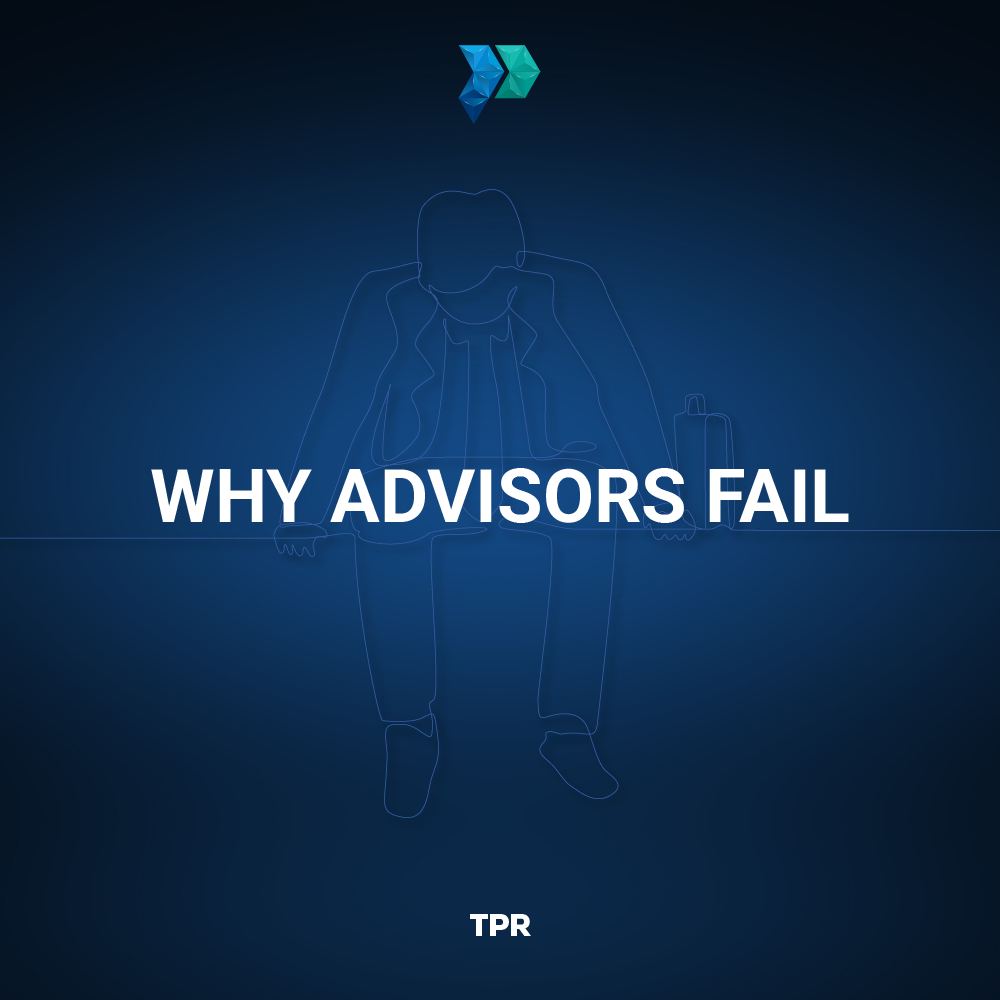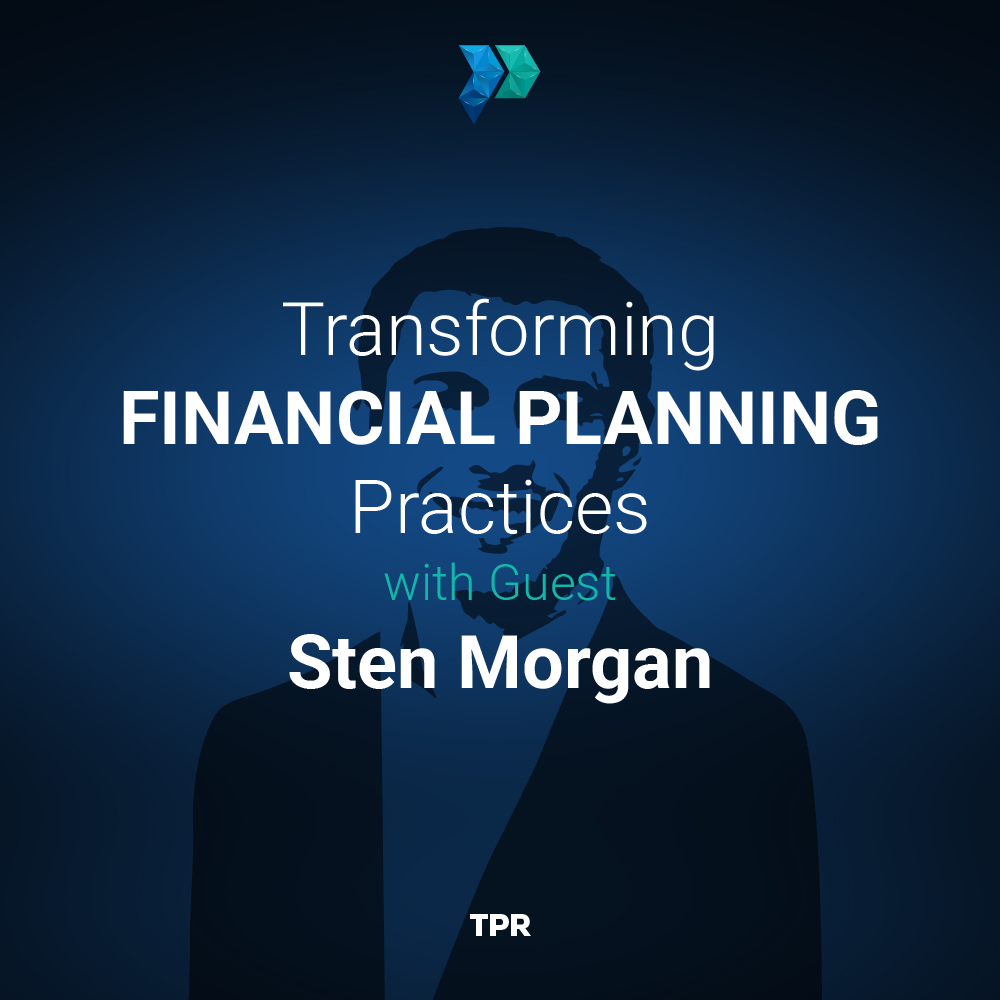What You'll Learn In Today's Episode:
- Valuations in the RIA space can be higher than traditional methods suggest
- Selling to external buyers can be a better option for Gen Two advisors than internal succession.
- Cultural fit and alignment are crucial in ensuring a successful sale.
- When starting a business, it is important to have a clear long-term vision and strategy, including exit strategies and succession planning.
- Choosing the right legal structure for your business is essential, and you must understand the laws and regulations associated with it.
- Having a succession plan in place and communicating it to clients is important for the long-term success of the business.
In this recap episode, Amber is sharing the highlights from this week. Monday, Ted Jenkin joined Matt to reveal that traditional valuation methods often underestimate the true worth of successful RIA practices. He emphasized the power of leveraging the open marketplace, where multiples can soar as high as 14 to 17 times cash flow for larger firms. The key, according to Jenkin, is understanding the velocity of money and evaluating strategies that will rapidly build net worth. On Thursday, Jamie stressed the importance of starting with a clear long-term vision and exit strategy when it comes to your business. She advocates for vision mapping over traditional business plans, coupled with a SWOT analysis that considers the owner’s personal strengths and weaknesses. Choosing the right legal structure, maintaining proper documentation, and avoiding the commingling of assets is crucial to protecting liability and maximizing valuations. Perhaps most importantly, Jamie emphasized the need for a well-defined succession plan, not just for the business but also for the transition of client relationships. By building a sellable business from day one, with clean financials and verifiable records, financial advisors can position themselves for maximum growth and an optimal exit strategy.
Resources In Today's Episode:
Read the Transcript Below:
Amber
Hello TPR Nation. This is Amber Kuhn. Thank you for joining me on today’s Follow up Friday, where I’ll be recapping this week’s episode highlights and action items. On Monday, Matt was joined by Ted Jenkin from Oxygen Financial Exit Stage Left Advisors and JPTD partners to talk about the reality of valuations in the RIA space. Ted shared that most advisors are operating under this assumption that practices are valued at around 3x using those traditional methods, but he said the number is a way off from what some buyers and private equity firms are actually paying on the open market. He said the way to maximize your valuation is through the marketplace, and that you could get a much higher multiple than you would by selling it to just someone down the hall. For those larger RIAs over 500 million Ted said those multiples can reach 14 to 17x cash flow, and that the driver is arbitrage. These buyers can acquire the firm at a lower multiple and then realize higher valuations by tapping into capital markets. Ted shared that as an advisor, you need to evaluate the velocity of money to maximize your own net worth and consider what’s going to build your net worth the fastest. Matt and Ted also talked about Gen 2 advisors and how they don’t necessarily have to buy a practice. Ted said some buyers will offer Gen 2 advisors the chance to receive equity in the practice after a period of time as an employee and potentially resell it. So selling to those external buyers could end up being better for Gen 2 advisors than an internal succession. Now for advisors still in a heavy growth mode, Ted recommends considering acquiring undervalued practices to create your own arbitrage play, or, he said, better yet, if you can prove you have organic growth, you then have the opportunity to get more for your practice relative to just the numbers. Matt and Ted wrapped up by pointing out how cultural fit and alignment on things like investment velocity are critical to ensuring that a sale doesn’t end up becoming a nightmare scenario. Let’s get into action items. Listen to Ted’s Kitzes episode, which we have linked in Monday show notes, visit JPTDpartners.com/theperfectria, and this will include a T minus two year checklist to prepare yourself if you want to go to market and test it out and then a list of the top 10 client acquisition techniques from Ted. On Thursday, Jamie was ready to talk about S corps, but she said what s really stands for is shenanigans. Because she said that’s what she sees a lot of business owners do, over and over again. She then went into the conversations that she has about how to design and structure different entities. One of the key points that she made was that importance of having a clear long term vision and strategy when you’re starting that business. She said, Look beyond that initial setup and consider factors like exit strategies and succession planning from the very beginning. So the first thing that she does is take a legal assessment, so how many people are coming into the organization? She then wants to get what the goal is in the next five to 10 years, and what’s that ultimate outcome. The reason is because many people start an organization, but they don’t get themselves an exit strategy. She likes to do a lot of vision mapping, as opposed to creating a business plan. And this will focus on what things look like long term. From there, Jamie will do a SWOT analysis, and she pointed out that she’ll put the business owner’s name and her strengths and weaknesses, because she said the success hinges on that person. She wants to identify that and get the owner thinking about how their business is bigger than them. After that, Jamie wants to choose a legal structure. She said this is where you want to bring in a business attorney. Also during this time, she said that you’ll hear the reasons why an LLC protects people, but also about piercing the corporate veil. She said, if you set up LLC, you then have to abide by those laws and regulations and how it should be operated, and if you fail to do the work to create and maintain it, then you’ve pierced the corporate veil, and then you lose that liability protection. She talked about how things can get sloppy for you and your clients when it comes to commingling assets, and when those personal and corporate assets are mixed and money is being transferred, or when deposits are made in a personal accounts, because then it just makes it hard to distinguish the two. Jamie mentioned a couple of other ways that advisors get sloppy with S corps. She said, What are you doing on the profit and loss sheet, where you’re writing things off just because you’re getting a business deduction? Said, it’s great to get this legitimate tax write offs, but you need to document things. The other way that people get slobby is the failure to have a succession plan in place. She said, You need to look at what you’re doing with how are you transitioning your clients, you also need to have disability insurance on yourself now. With succession, she said consider what agreements you have in place right now, and what do your clients know about it. She reminded everyone that you’re required to disclose your disaster recovery, so make sure that you not only have this map out, but that you’ve communicated this with the people involved. She said that regardless of your long term plan you want to build a business that you could sell tomorrow. So keep your financials clean. Everything needs to be evidence and verifiable. Let’s get into action items. Review your financials. Look at whether you could potentially have your own corporate vail pierced. So if you’re not operating efficiently, what do you need to do today to make sure that you are, what write offs are you taking that you need to document and show justification for? And lastly, what is your succession plan? Make sure that you have it documented, communicated, and that it’s part of your long term cleaning strategy. Before we go TPR Nation, we just wrapped up a Nation Power Session this week, and enrollment is open through Monday, June 17. If you’re looking for how you can double your practice in 12 to 36 months, reach out to us at lifestyle@theperfectria.com. Thank you for joining me today, and be sure to give us five stars wherever you’re listening and share this or any of our episodes with another advisor or team member who you think might benefit. Until next time, happy planning!








